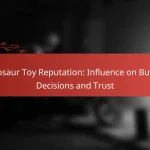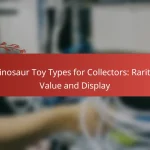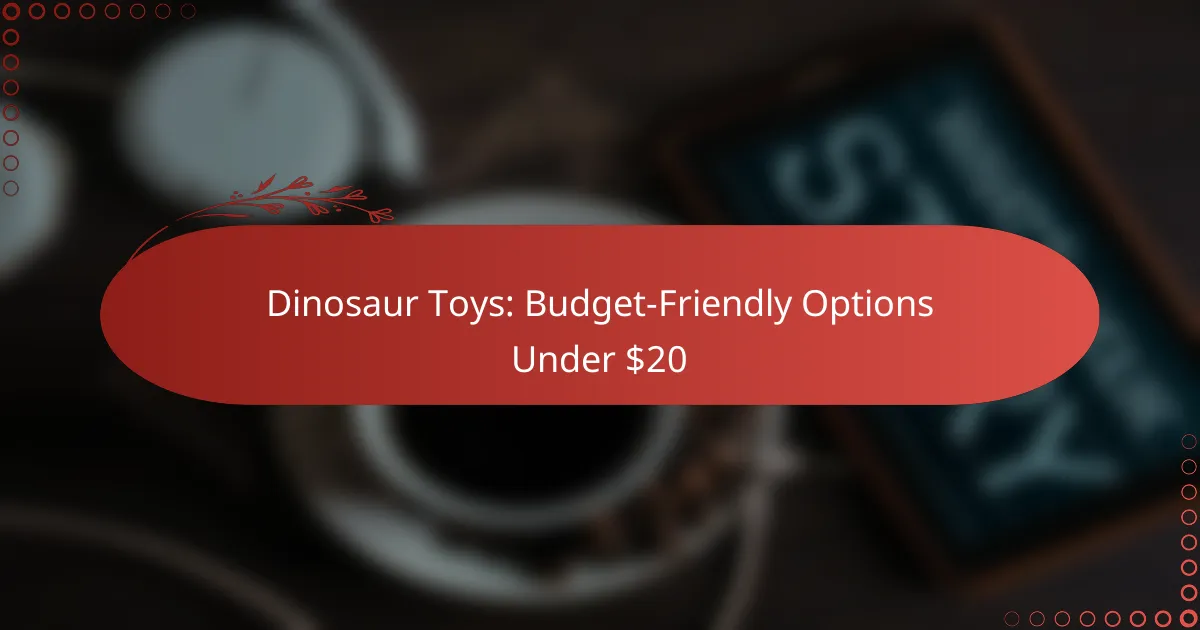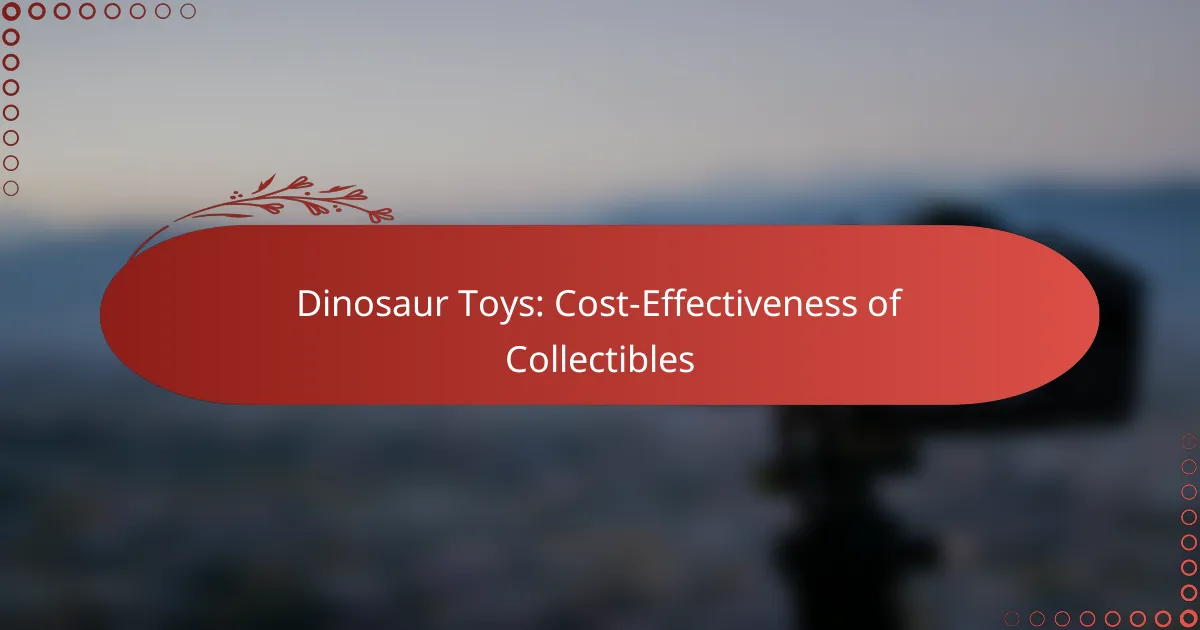Consumer spending habits on dinosaur toys vary widely across different regions, shaped by cultural preferences and economic conditions. North America and Europe typically exhibit higher spending levels, while regions like Asia and South America display diverse interests influenced by local trends. Key brands such as LEGO and Jurassic World cater to these varying demands, offering products that appeal to different age groups and interests.

How do consumer spending habits on dinosaur toys vary by region?
Consumer spending habits on dinosaur toys differ significantly across regions due to cultural preferences, economic factors, and market availability. In general, North America and Europe tend to have higher spending levels, while Asia and South America show varied interest based on local trends.
North America spending trends
In North America, consumer spending on dinosaur toys is robust, often driven by a strong interest in both educational and collectible items. Families typically spend between $50 to $150 annually on these toys, with popular brands like LEGO and Schleich leading the market.
Online shopping has surged, with platforms like Amazon offering a wide range of options, making it easier for consumers to find specific dinosaur toys. Seasonal promotions, especially around holidays, further boost sales in this region.
Europe spending trends
European spending on dinosaur toys varies by country, with the UK and Germany being the largest markets. Consumers often spend between €30 to €100 annually, influenced by trends in educational play and sustainability.
Local toy fairs and exhibitions play a significant role in shaping consumer preferences, showcasing innovative designs and eco-friendly materials. Brands that emphasize educational value tend to perform better in this region.
Asia spending trends
In Asia, spending on dinosaur toys is growing, particularly in countries like Japan and China, where interest in both traditional and modern toys is high. Consumers may spend around ¥5,000 to ¥15,000 annually, with a focus on collectible figures and interactive toys.
Online marketplaces dominate the retail landscape, allowing consumers to access a wide variety of products. Cultural influences, such as popular animated series featuring dinosaurs, significantly impact purchasing decisions.
Australia spending trends
Australian consumers show a moderate interest in dinosaur toys, with annual spending typically ranging from AUD 40 to AUD 120. The market is characterized by a mix of educational toys and collectibles, appealing to both children and adult collectors.
Retailers often capitalize on the popularity of dinosaur-themed events and exhibitions, which can drive sales. Online shopping is prevalent, with consumers seeking unique items not always available in local stores.
South America spending trends
In South America, spending on dinosaur toys is relatively lower compared to other regions, with annual expenditures generally between $20 to $80. Economic factors and varying levels of disposable income influence purchasing habits across countries like Brazil and Argentina.
Local toy manufacturers are emerging, focusing on affordability and educational value. However, imported toys are also popular, particularly during special occasions, highlighting a growing interest in dinosaur-themed products.

What are the most popular dinosaur toy brands in different regions?
The popularity of dinosaur toy brands varies significantly across different regions, influenced by local preferences and cultural factors. Key brands such as LEGO, Schleich, Jurassic World, and Papo dominate the market, each offering unique products that appeal to various age groups and interests.
LEGO dinosaur sets
LEGO dinosaur sets are particularly popular in North America and Europe, where building and creativity are highly valued. These sets often feature detailed models that encourage imaginative play and can range from simple to complex designs, catering to different age groups.
When selecting LEGO dinosaur sets, consider the age recommendations and the number of pieces. Sets with fewer pieces are suitable for younger children, while intricate designs appeal to older kids and collectors. Prices typically range from around $20 to $150, depending on the set’s complexity.
Schleich dinosaur figurines
Schleich dinosaur figurines are favored in Europe, especially in Germany, where the brand originated. Known for their realistic designs and high-quality materials, these figurines are often used for both play and educational purposes.
Schleich offers a wide variety of dinosaur species, making them ideal for collectors and enthusiasts. Prices generally range from €5 to €30 per figurine, depending on size and detail. When purchasing, check for authenticity to ensure you are getting genuine Schleich products.
Jurassic World toys
Jurassic World toys have gained immense popularity globally, particularly in North America and Asia, thanks to the franchise’s blockbuster films. These toys often include action figures, playsets, and interactive dinosaurs that appeal to fans of all ages.
When buying Jurassic World toys, consider the latest releases tied to movie promotions, as they often feature exclusive designs. Prices can vary widely, from around $10 for smaller figures to over $100 for larger playsets. Look for sales or bundles to maximize value.
Papo dinosaur models
Papo dinosaur models are highly regarded in Europe for their artistic craftsmanship and attention to detail. These models are often used as display pieces and are popular among collectors who appreciate their realistic portrayal of dinosaurs.
Prices for Papo models typically range from €15 to €50, depending on the size and intricacy of the design. When purchasing, consider the model’s scale and how it fits into your existing collection, as well as the brand’s reputation for quality and durability.

What factors influence dinosaur toy purchases?
Several key factors influence dinosaur toy purchases, including age demographics, educational value, brand reputation, and shopping preferences. Understanding these elements can help consumers make informed decisions when selecting toys for children.
Age demographics
Age demographics play a crucial role in determining which dinosaur toys are popular among consumers. Younger children, typically aged 3 to 7, tend to prefer brightly colored, soft toys, while older kids, aged 8 to 12, may gravitate towards more detailed models or action figures.
Parents often consider age-appropriate features such as safety standards and developmental benefits when purchasing. For example, toys for toddlers might focus on sensory experiences, while those for older children may emphasize creativity and imaginative play.
Educational value
The educational value of dinosaur toys significantly influences purchasing decisions. Many parents seek toys that promote learning, such as those that teach about prehistoric creatures, paleontology, or environmental science.
Products that combine fun with education, like interactive dinosaur kits or books, often attract buyers. Parents may look for toys that encourage critical thinking, creativity, and problem-solving skills, making them more appealing in the market.
Brand reputation
Brand reputation is a vital factor in dinosaur toy purchases. Established brands with a history of quality and safety are often preferred by consumers, as they provide reassurance regarding the product’s durability and educational benefits.
Parents frequently rely on reviews and recommendations from other consumers when choosing brands. Toys from reputable manufacturers may command higher prices but are often seen as a worthwhile investment due to their reliability and positive feedback.
Online vs. in-store shopping
Shopping preferences, whether online or in-store, greatly affect dinosaur toy purchases. Online shopping offers convenience and often a wider selection, allowing consumers to compare prices and read reviews easily.
In contrast, in-store shopping allows parents to physically inspect toys for quality and safety. Many consumers may choose a hybrid approach, researching online before making a final purchase in-store to ensure satisfaction with their choice.

How do seasonal trends affect dinosaur toy sales?
Seasonal trends significantly influence dinosaur toy sales, with various periods of the year prompting spikes in consumer spending. Understanding these trends helps retailers and manufacturers optimize their marketing strategies and inventory management.
Holiday sales spikes
During the holiday season, particularly around December, dinosaur toy sales often experience substantial increases. Parents and gift-givers are more inclined to purchase toys as presents, leading to a surge in demand. Retailers frequently offer promotions and discounts to attract buyers during this peak period.
In the United States, for example, sales can rise by 30-50% compared to other months, making it crucial for businesses to stock popular items well in advance. Online shopping trends also contribute to this spike, as consumers seek convenience during the busy holiday season.
Back-to-school promotions
Back-to-school season, typically from late July to early September, also affects dinosaur toy sales, albeit in a different manner. While the focus is primarily on educational supplies, parents often purchase toys as rewards or incentives for children returning to school. This can lead to a modest increase in sales during this period.
Retailers can capitalize on this trend by bundling dinosaur toys with school supplies or offering discounts for purchases made during back-to-school promotions. This strategy not only boosts toy sales but also enhances customer loyalty.
Summer toy trends
Summer months generally see a shift in consumer preferences, with outdoor and activity-based toys gaining popularity. Dinosaur toys that encourage imaginative play or outdoor adventures tend to perform better during this season. Sales may not spike as dramatically as during the holidays, but there is a consistent demand for engaging toys.
Retailers should consider highlighting dinosaur toys that promote active play, such as those that can be used in parks or backyards. Offering summer-themed promotions can also attract attention and drive sales during this period.
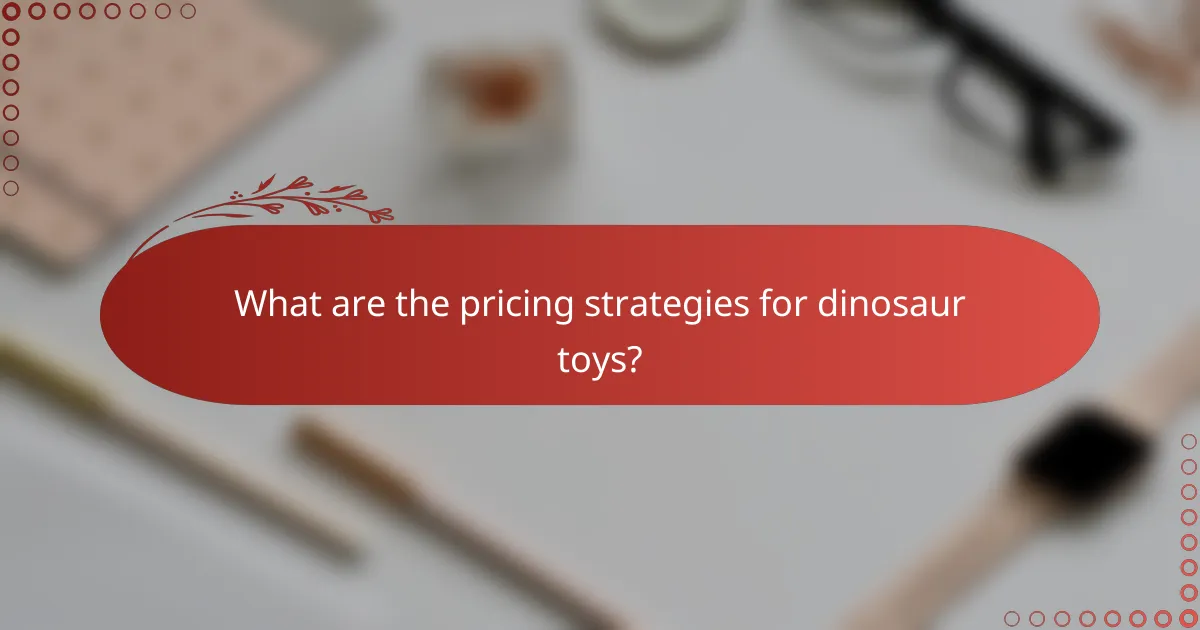
What are the pricing strategies for dinosaur toys?
Pricing strategies for dinosaur toys typically involve cost-based pricing, value-based pricing, and competitive pricing. These approaches help manufacturers and retailers set prices that attract consumers while ensuring profitability.
Cost-based pricing
Cost-based pricing involves calculating the total cost of producing dinosaur toys and adding a markup for profit. This strategy ensures that all production expenses, including materials, labor, and overhead, are covered. For instance, if a toy costs $5 to produce, a retailer might price it at $10 to achieve a 100% markup.
When using this method, it is crucial to regularly review costs as they can fluctuate due to changes in material prices or labor rates. Keeping a close eye on these factors can help maintain profitability.
Value-based pricing
Value-based pricing focuses on the perceived value of dinosaur toys to consumers rather than just the cost of production. This strategy considers factors like brand reputation, uniqueness, and consumer demand. For example, a high-quality, educational dinosaur toy may command a higher price due to its perceived benefits.
To effectively implement value-based pricing, businesses should conduct market research to understand what customers are willing to pay and adjust prices accordingly. This approach can lead to higher profit margins if executed well.
Competitive pricing
Competitive pricing involves setting prices based on what competitors charge for similar dinosaur toys. This strategy is common in markets with many similar products, as it helps maintain market share. For instance, if most competitors price their dinosaur toys between $8 and $12, a retailer might choose to price theirs at $10 to remain competitive.
While competitive pricing can attract customers, it is essential to ensure that the quality and features of the toys justify the price. Regularly monitoring competitors’ pricing strategies can help businesses stay relevant in the market.

